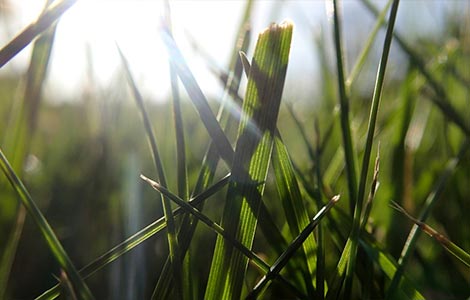
- Boron (B) is essential for all plant growth. It is important for cell wall structure, root development, and pollination.
- Bermudagrass requires an adequate supply of available boron, especially during rapid vegetative growth.
- Some bermudagrass varieties may respond to applied boron, especially on sandy soils in high rainfall regions, or with adverse weather conditions during the growing season.
- Where needed, a preplant application of Granubor® with the early-season top-dressed NPK fertilizer blend generally will ensure an adequate supply of boron.
Bermudagrass requires a high fertility soil for optimum production. Well-drained soils with a good supply of organic matter which have been well fertilized and limed over several years will generally produce the highest forage yields.
Cell wall strength, cell division, seed development and sugar transport are related to boron nutrition. While boron requirements for optimum plant nutrition are low compared with those of the primary nutrients, the need for boron is especially significant if maximum forage yields are desired.
Deficiency symptoms
Boron deficiency symptoms are rare in most bermudagrass varieties. The most common symptom of possible boron deficiency is decreased forage yields, especially during late spring and early summer cuttings with adverse (hot, dry) weather conditions.
Soil test and plant analysis
Boron deficiencies may occur on coarse-textured soils where organic matter content is low, on soils with a pH above 7.0, and on recently limed soils. Soil testing and plant analyses are both helpful in assessing the potential boron supplying capacity of the soil and the current boron status of the growing plant.
The critical level of hot-water-soluble boron for bermudagrass in most soils is not well established but it ranges from 0.1-0.4 ppm, depending on the soil pH, organic matter content and texture.
Bermudagrass grown on soils below the critical level may respond to applied boron, depending on the variety and the weather conditions during the growing season.
The critical level of boron in the upper bermudagrass leaves is about 4 ppm, and the usual leaf-boron range is 5-15 ppm.
Recommendations for bermudagrass
Forage yield responses to applied boron are often inconsistent and seasonal, probably due to environmental effects on crop growth. However, forage yields of some varieties may be improved with boron fertilization, especially on sandy soils in high rainfall regions, or with over-irrigation because soluble boron can be easily leached from the root zone. Adverse weather conditions also can decrease the supply of available boron in soil and/or boron uptake by the plant during the growing season.
Response to applied boron generally is greatest when there are adequate supplies of other nutrients. Bermudagrass plants with leaf boron contents below the critical level may be sprayed with Solubor® during the growing season.
To ensure a constant supply of available boron throughout the growing season, Granubor may be bulk blended with the N fertilizer which is topdressed after each harvest. Solubor can be included with fluid N fertilizers for such topdressings.
The suggested rate of boron for each application during the growing season is 0.1-0.25 lbs of B/acre, with a total annual application rate of 0.5-1.0 lbs of B/acre.

Data below shows increased forage yields of bermudagrass under the following conditions: Granubor bulk blended with an NPK blend, topdressed in the early spring on a sandy soil in Arkansas. The boron rate ranged up to 3 lbs/acre. Five cuttings of boron were made at 5-6 week intervals. Highest forage yields resulted with the 2-lb rate of boron. Hay quality was not affected by boron applications.
Other studies also have reported forage yield increases with early-season boron applications under high-yield management, especially with favorable growing conditions.
Bermudagrass apparently is quite tolerant to boron. In a Louisiana test on a sandy soil, bermudagrass was fertilized with rates up to 8 lbs of B/acre annually for 3 years with no detrimental effects on forage yields.
